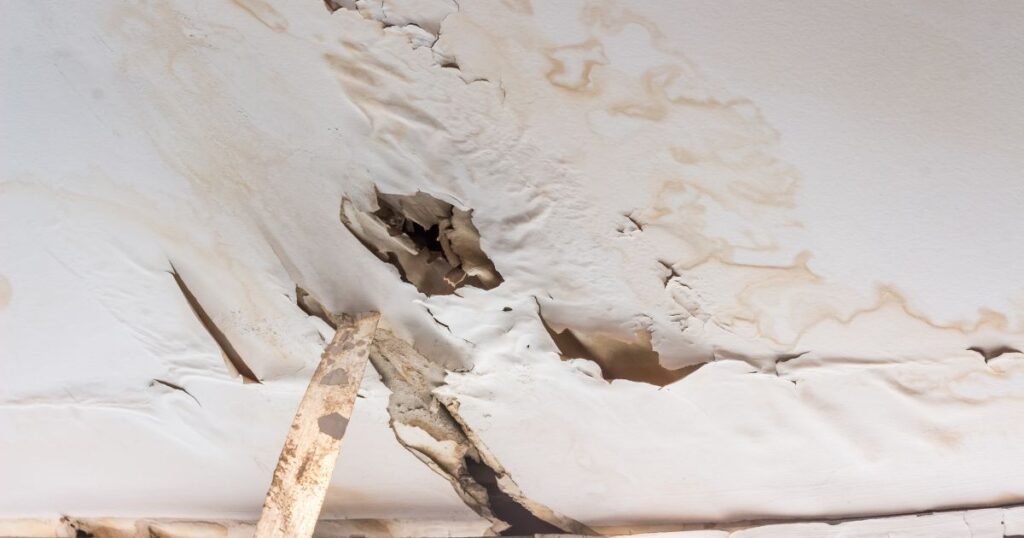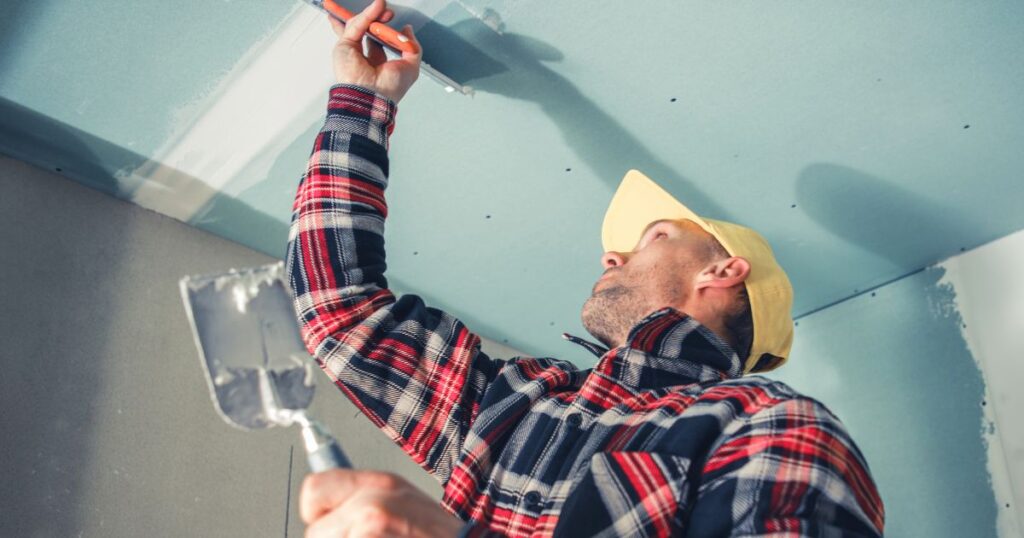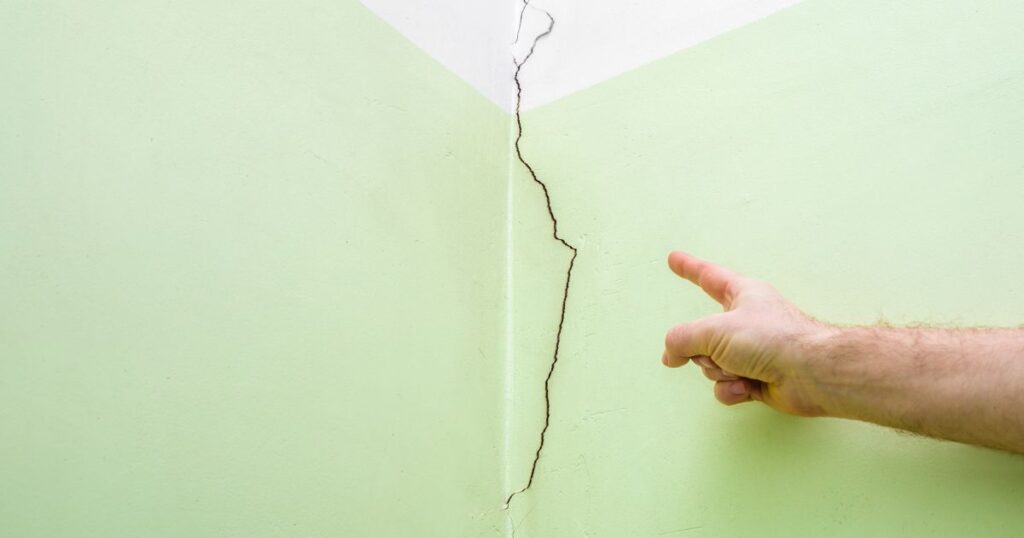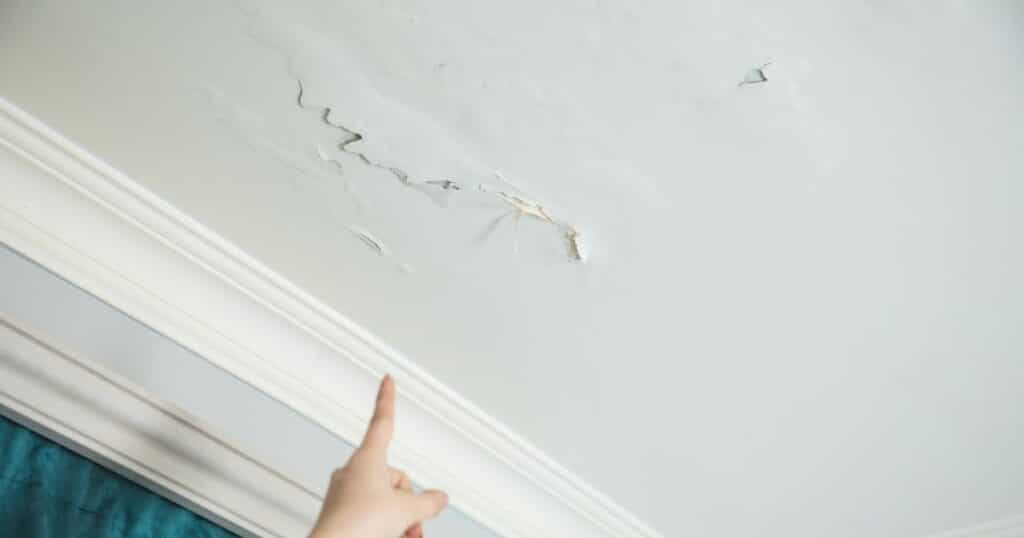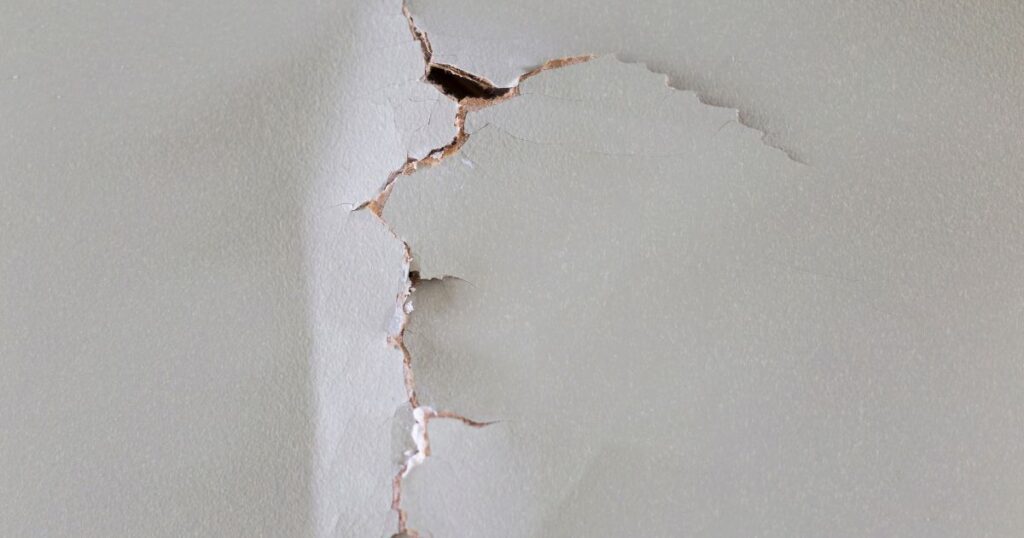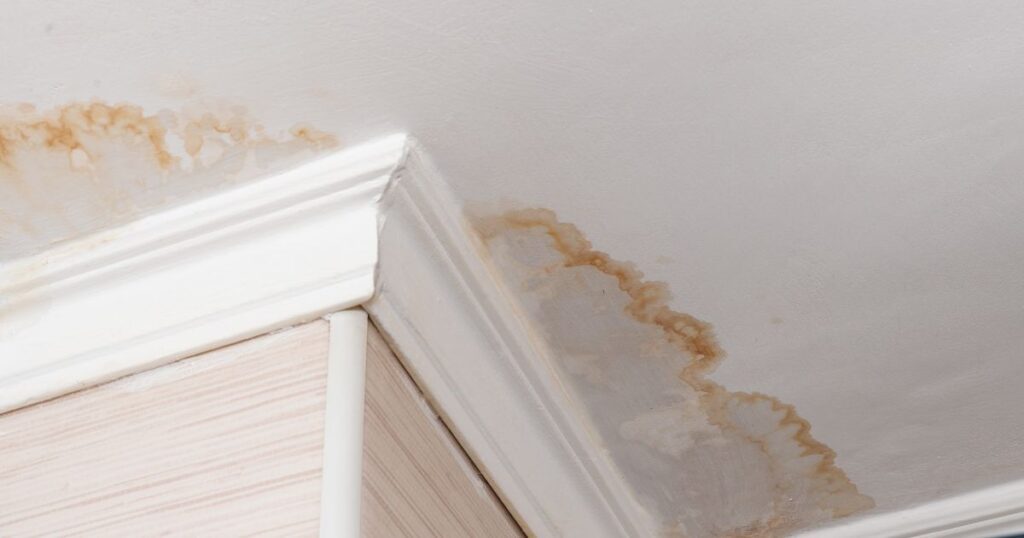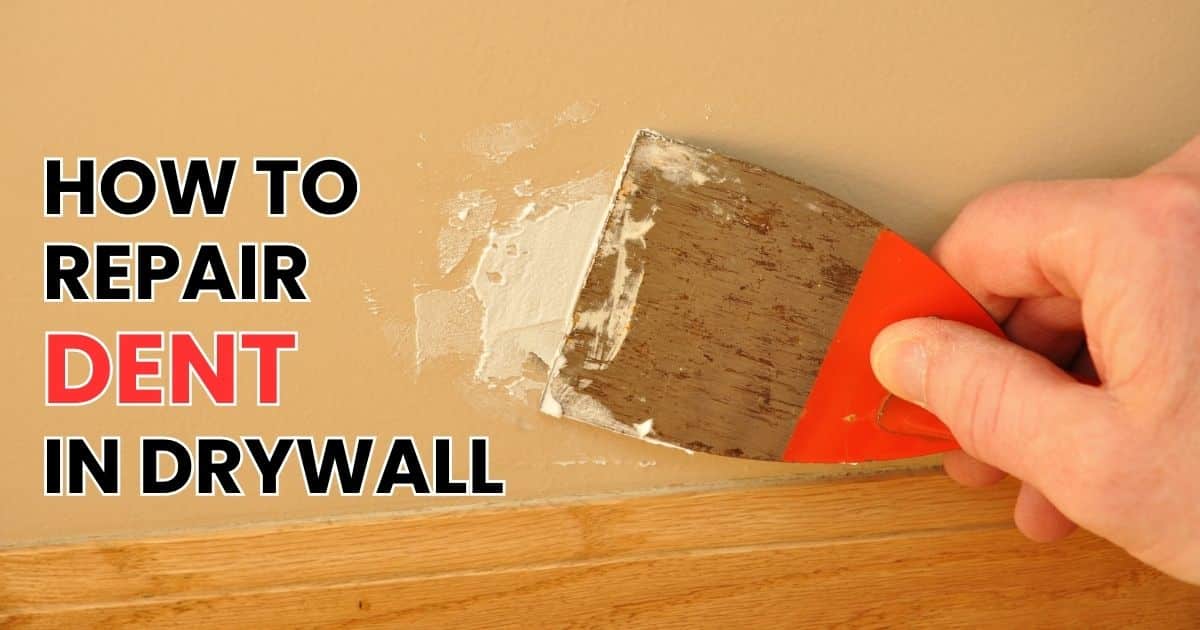
Do you have unsightly dents in your drywall that are driving you crazy? Are you tired of people commenting on them every time they come over? It’s time to take action and restore your drywall to its former glory!
A smooth wall surface is an essential part of any home, and dents can be incredibly frustrating. But fear not, we have compiled the ultimate guide to repairing drywall dents.
Learn how to repair dent in drywall with this detailed guide. From assessing the damage to finishing touches, we’ve got you covered. Prevent future damage too!
The Importance of a Smooth Wall Surface
A smooth wall surface is not just visually appealing, it also plays an important role in the structural integrity of your home. Dents and other damages weaken the drywall, making it more susceptible to cracks and holes.
These imperfections can become bigger problems if left unaddressed, leading to costly repairs down the line. Not to mention, a bumpy wall surface is a major eyesore that can detract from the overall beauty of your home.
The Common Causes of Dents in Drywall
There are several common causes of dents in the drywall that homeowners should be aware of. One cause is simply accidental damage caused by furniture or other heavy objects being moved around the room. Another common cause is damage caused by doorknobs or other fixtures being bumped into the wall repeatedly over time.
In some cases, water damage or leaks can also cause dents and imperfections in drywall. Regardless of what caused the dent originally, it’s important to address it as soon as possible to prevent further damage and keep your walls looking their best.
How To Repair Dent In Drywall
Steps for Repairing a Dent in Drywall
Repairing a dent in drywall may seem like an intimidating task, but with the right tools and techniques, it can be a simple and straightforward process. There are several steps involved in the process, including assessing the damage, preparing for repair, and applying the correct techniques to restore your drywall to its former glory.
Assessing the Damage
The first step in repairing a dent in drywall is to assess the extent of the damage. This will help you determine whether it’s a minor or major dent and what type of drywall you’re dealing with.
Minor dents can often be fixed with spackle or joint compound, whereas major dents may require more extensive repairs or even full drywall replacement. Identifying the type of drywall you have will also be critical in determining which repair techniques and materials will work best.
Preparing for Repair
Once you’ve assessed the damage and determined what needs to be done, it’s time to prepare for repair. This involves gathering all necessary tools and materials, clearing the work area of any debris or furniture that could get in your way, and protecting surrounding surfaces with drop cloths or plastic sheeting.
Repair Techniques for Dents in Drywall
There are several repair techniques that can be used to fix dents in drywall, depending on the severity of the damage. These include filling the dent with spackle or joint compound, sanding down rough spots to create a smooth finish, applying primer and paint to match the existing wall color, cutting out damaged sections, and replacing them with new pieces of the drywall as needed.
Filling and Sanding Dents in Drywall
One common technique for fixing minor dents is filling them with spackle or joint compound before sanding down any rough spots until they’re flush with surrounding wall surfaces. This technique is relatively simple but may require some patience as you wait for each layer of spackle to dry before moving on to the next step.
Painting Over Repaired Drywall Dents
After you’ve filled and sanded the dent, it’s time to apply primer and paint to match the existing wall color. This can be a bit tricky if you’re not experienced with painting, but with some practice, you should be able to achieve a seamless repair that blends in perfectly with the rest of your wall.
Assessing the Damage
Inspecting the Dent
When it comes to repairing drywall dents, the first step is always to inspect the damage. It’s crucial to take a close look at the dent and assess its severity correctly.
Although some dents might appear minor, they could be hiding more significant problems that will worsen if left unaddressed. A thorough inspection involves identifying not only the size and depth of the dent but also any cracks or holes on its surface.
Determining if it’s a Minor or Major Dent
After identifying all possible damage, it’s time to decide whether you have a minor or major dent issue on your hands. A minor dent usually has no visible cracks or punctures and requires simple repair techniques such as spackling and sanding down surfaces to create smooth finishes. On the other hand, major dents present bigger challenges as they tend to be deeper and could cause structural damage that warrants professional attention.
Identifying The Type of Drywall
One crucial factor that often goes overlooked when assessing drywall damage is identifying what type of drywall was used on your wall surface initially. Different types of drywall have unique textures, thicknesses, weights, and densities that affect their performance when damaged. Therefore, understanding your wall’s original makeup will help you determine which repair techniques are best suited for restoring its condition.
Matching Texture When Repairing A Dent in Drywall Patching and Smoothing Drywall with a Dent
Steps To Repair And Restore Drywall With A Dent Common Issues And Solutions For Dents In Drywall
Steps For Repairing A Dent In Drywall For instance, repairing a textured ceiling with popcorn texture requires different techniques than fixing a flat wall with no texture at all.
Additionally, specifying what type of drywall was used on your wall surface will affect the kind of primer and paint you use to match colors after repair. Assessing a drywall dent’s damage is an essential first step in repairing it effectively.
Inspecting the dent’s size and depth and identifying the type of drywall used on your wall surface will enable you to choose the best repair techniques that guarantee lasting solutions. It’s also crucial to determine if you’re dealing with a minor or major dent problem since major dents may require professional attention.
Additionally, matching texture when repairing a dent in drywall is another critical aspect of restoring your wall surface to its original state. With these essential steps covered, repairing a dent in drywall should be a seamless DIY task for any homeowner.
Preparing for Repair
Gathering necessary tools and materials
Before attempting to repair a dent in drywall, it is crucial to ensure that you have all the necessary tools and materials for the task. This includes spackle or joint compound, sandpaper, putty knife, paint, primer, and drywall saw if the damage is extensive. Best practices for repairing a dent in drywall dictate that you have everything on hand before you begin working.
It’s important also to purchase high-quality products when fixing dents in drywall. Cheap spackle or joint compound will not bond well with the surface of your wall and may result in a patchy repair job.
So don’t be cheap! Invest in good quality material so that your wall looks great after the repairs.
Clearing the work area
Another essential step when repairing a dent in drywall is clearing out any items from the surrounding area. This may include furniture, artwork, or any other valuable items that could potentially be damaged during the repair process.
Clearing out space ensures that no dust or debris settles on nearby items, which can cause greater headaches later on. Also, ensure you are wearing appropriate clothing for this type of work – including gloves and safety glasses if needed – to protect yourself from dust particles which can be harmful to breathe.
Protecting surrounding surfaces
Putting down protective plastic sheeting or drop cloths around your work area will help keep everything clean. Restoring drywall with a dent to its original state requires attention to detail which can get messy quickly without proper preparation.
The plastic sheeting will also act as an effective barrier against paint drips and splatters while painting over repaired drywall dents later on. In addition to protecting surfaces from paint spills during touch-ups after repairs have been completed (if needed), covering up floors using old towels or bedsheets can help protect them from foot traffic and dirt.
Repair Techniques
Filling the Dent with Spackle or Joint Compound
Filling and sanding dents in drywall can be a daunting task, but with the right tools and some patience, anyone can learn how to repair a dent in drywall. One of the most common techniques for repairing dents is to fill it with spackle or joint compound.
This process involves applying the filler material directly into the dent and smoothing it out until it is level with the surrounding wall surface. To start, make sure that you have all the necessary tools at hand such as a putty knife, sandpaper, spackle or joint compound and a small container for mixing.
You should also clear your work area of any debris or dust to prevent them from sticking to the filling. Next, apply an appropriate amount of spackle or joint compound into the dent using your putty knife.
Use enough to fully cover the indentation while avoiding excess amounts that may result in raised bumps once dried. Smooth out any bumps or grooves using your putty knife and allow drying time according to instructions on the packaging.
Once dried, use fine-grit sandpaper to carefully sand down any remaining rough edges present in your repair area. This ensures that you achieve a smooth finish before painting over repaired drywall dents.
Sanding Down The Surface To Create A Smooth Finish
Sanding dents in drywall is often one of those tedious tasks that are easily overlooked but can make all the difference when restoring drywall with a dent to its original state. Once you’ve filled up any shallow indentations with spackle or joint compound, it’s time to move on to sanding down the surface until it achieves a smooth finish.
Start by identifying any raised portions around your repair area that need further smoothing out by running your fingers over them carefully so you don’t damage your work. Use your sandpaper to carefully shave off any bumps or ridges while being careful not to over-sand the surface.
Remember that the goal is to achieve a level surface that blends seamlessly with the surrounding wall texture, so avoid over-sanding, as this can create more damage than good. Once you’ve sanded off any raised portions of the repair area, use a fine-grit sandpaper or sanding block to achieve a smooth finish.
Applying Primer and Paint To Match Existing Wall Color
Patching and smoothing drywall with a dent is only half the job. Matching texture when repairing a dent in drywall involves applying primer and paint that matches your existing wall color to ensure that your repair doesn’t stand out against an otherwise blemish-free wall surface.
Before priming, though, make sure you thoroughly clean up your repair area by removing any debris or dust left over from sanding. Apply the primer using a brush or roller until it fully covers your dent repair area.
Allow drying time before moving on to painting. Matching paint color can be tricky, but with some patience and attention to detail, you can easily fix drywall dents without drawing attention to them.
Use small brushes for hard-to-reach areas such as corners, while rollers are ideal for large surfaces like ceilings or walls. Once you’ve applied paint evenly over the repaired drywall dents and allowed adequate drying time as per instructions on the packaging, inspect the repaired area for any imperfections before proceeding with additional layers.
Advanced Techniques for Larger Dents
Cutting out the damaged section and replacing it with a new drywall piece: A True Fix
When it comes to repairing larger dents in drywall, you cannot simply rely on spackle or joint compound. These products are excellent for minor dents and scratches but do not provide a long-term solution for more significant damage.
If the dent is severe or is larger than six inches in diameter, it’s time to consider cutting out the damaged section and replacing it with a new piece of drywall. This technique may seem daunting at first, but it is the most effective method of restoring drywall with a dent to its original state.
It ensures that the damaged area is removed completely, leaving behind a clean slate to work with. Once you have removed the damaged portion of the wall, simply cut a new piece of drywall to size and attach it securely to the surrounding studs.
While this technique requires more effort and time compared to other repair methods, it results in an undetectable repair that blends seamlessly into the surrounding wall. The use of proper tools, such as a utility knife, saws, and screwdrivers, is imperative when carrying out this type of repair.
Taping and Mudding Technique for Seamless Repair: The Professional Touch
If you want your repaired drywall dent to look as if nothing ever happened, then taping and mudding should be your go-to technique. This method involves applying mesh tape over the damaged area before covering it up with a joint compound. The process might require multiple layers of joint compound before arriving at a perfect finish but trust me, the result will be worth every penny spent on purchasing materials such as sandpaper or paintbrushes.
When using this technique, make sure that you don’t apply too much pressure while smoothing out excess mud because if you do so, it might alter the texture of drywall and make it stand out. Properly sanding the dried compound and painting over the repaired dent is crucial for achieving a seamless finish.
The Verdict: Advanced Techniques for Larger Dents
While spackle or joint compounds are excellent options for minor dents, they do not provide a long-term solution to more severe damage. Cutting out damaged portions and replacing them with new drywall or taping and mudding techniques provide professional-looking results that will last for years to come.
When repairing dents in drywall, there is always room for error; therefore, hiring a professional is recommended if you’re unsure of your abilities. However, with proper research and guidance from articles like mine, you can confidently carry out repairs on your own.
Now that you have learned about advanced techniques that go beyond simple fillers and sanding tools, don’t hesitate to try them. Your walls will thank you!
Finishing Touches
Cleaning up Work Area
Congratulations! You have successfully repaired the dent in your drywall.
But wait, before you start admiring your handiwork, don’t forget to clean up the work area. Ignoring this step could leave your home looking like a construction site, and nobody wants that.
Grab a broom and dustpan or vacuum cleaner to sweep up any debris left from sanding and other repair work. Don’t forget to wipe down any surfaces that may have collected dust and debris.
Taking the time to clean up after yourself will not only help keep your home looking tidy, but will also prevent any accidents from happening in the future. Tripping over dust or debris can lead to injury, so take care of your space!
Inspecting Repaired Area for Imperfections
Now that you’ve cleaned up, it’s time for a close-up inspection of your repair job. Aesthetics are important when it comes to maintaining the value of your home, so make sure there are no imperfections on the surface. Run your hands over the area around where you made the repair.
Are there any rough patches or bumps? If so, apply additional spackle or joint compound using a putty knife until you have a perfectly smooth surface.
If you find that your repaired area is still not flush with the surrounding wall, don’t panic! It’s not uncommon for dents in drywall to leave an uneven surface behind, even after proper repair techniques are applied.
If needed, sand down any remaining bumps with fine-grit sandpaper before painting over them with primer and then paint. Remember – taking steps towards perfecting small repairs can go a long way in maintaining value and extending the life of our homes.
Frequently Asked Questions
What causes dents in drywall?
Dents in drywall can be caused by various factors, such as impact from objects, accidental collisions, furniture bumps, or even improper installation techniques that lead to weak spots in the drywall surface.
What is the best way to remove dents?
The best way to remove dents from drywall is by using a drywall joint compound or spackle to fill in the dent, allowing it to dry, and then sanding the area smoothly. For larger or more severe dents, using a drywall patch kit may be necessary.
What can I use for dents in drywall?
For dents in drywall, you can use a drywall joint compound, spackle, or a drywall patch kit to fill in and repair the damaged area. These materials provide a smooth surface that can be sanded and painted to match the surrounding wall.
Are small dents worth fixing?
Small dents in drywall are often worth fixing, as they can affect the overall appearance of the wall. Repairing small dents is relatively simple and can help maintain the integrity and aesthetics of the wall.
Is it better to repair or replace drywall?
In many cases, it is better to repair rather than replace drywall, especially for minor damage such as dents or small holes. Repairing drywall is typically more cost-effective and less time-consuming compared to replacing entire sections of drywall.
How do you smooth out damaged drywall?
To smooth out damaged drywall, you can follow these steps: (1) Apply a thin layer of drywall joint compound or spackle over the damaged area. (2) Allow it to dry completely. (3) Sand the repaired area using fine-grit sandpaper until it becomes smooth. (4) Clean the dust and debris and proceed with priming and painting, if needed.
Conclusion
Ignoring dents in drywall is a recipe for disaster. It might seem like a minor issue, but over time it can lead to more extensive damage and costly repairs.
A small dent can quickly turn into a large hole that will require you to cut out the damaged section and replace it with new drywall. Additionally, unsightly dents can detract from the overall appearance of your home or office and cause unnecessary stress.
Tips on how to prevent future damage to walls
Preventing dents and damage in drywall is much easier than fixing them. The first step is to be mindful of potential hazards that could lead to dents, such as moving furniture or hanging heavy objects on walls without proper support. To prevent future damage, consider investing in protective padding for furniture legs or using wall anchors when hanging larger items.
Another way to avoid wall damage is by properly maintaining your walls. This includes cleaning them regularly with mild soap and water, being cautious when vacuuming near walls, and avoiding leaning or pressing against them with sharp objects.
If you have children or pets at home, it’s important to teach them how to treat walls gently and responsibly. Encourage them not to kick balls against walls or roughhouse near them, as this can cause significant damage over time.
Repairing dents in drywall requires patience and attention to detail. By following the steps outlined in this guide along with proper maintenance techniques and prevention methods, you can ensure that your walls remain smooth and pristine for years to come.
Remember that while DIY repairs are possible for smaller dents, larger or more complex issues may require professional assistance. So don’t hesitate to seek help when needed!

